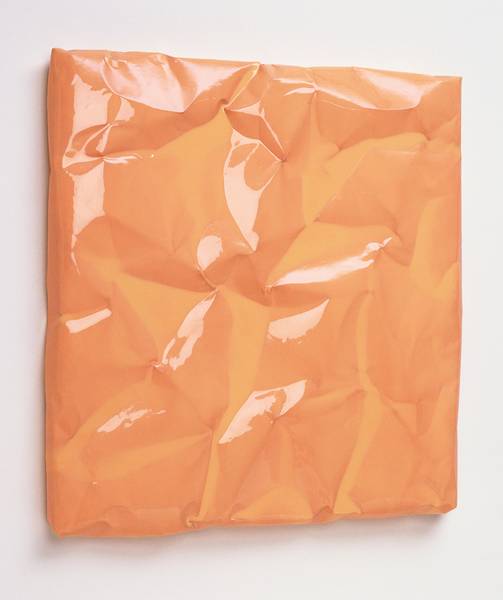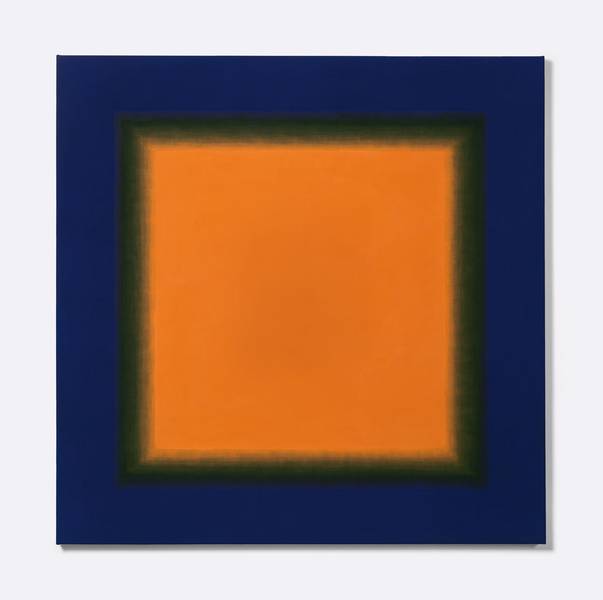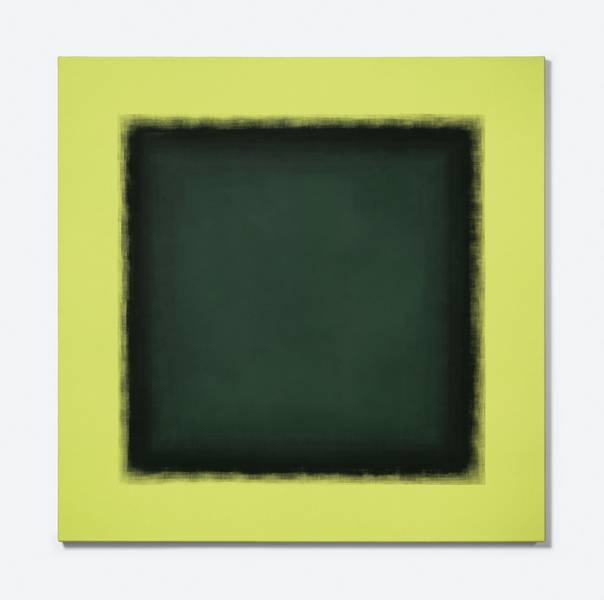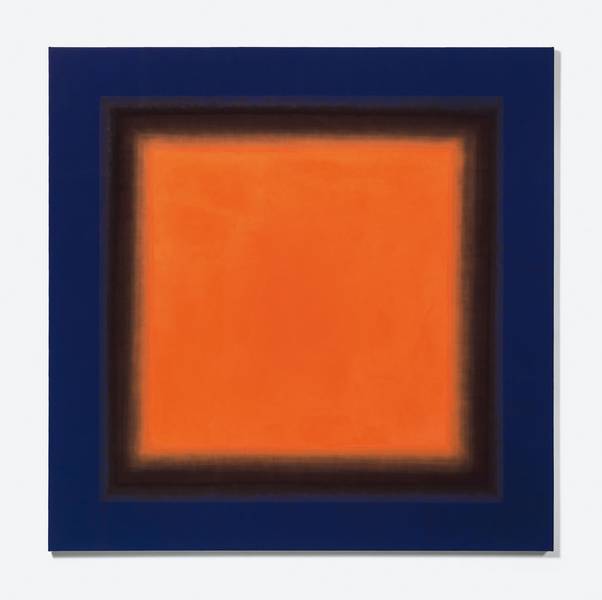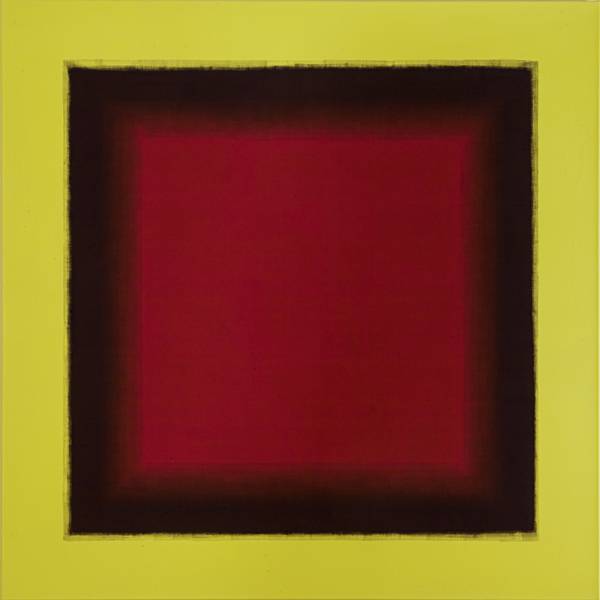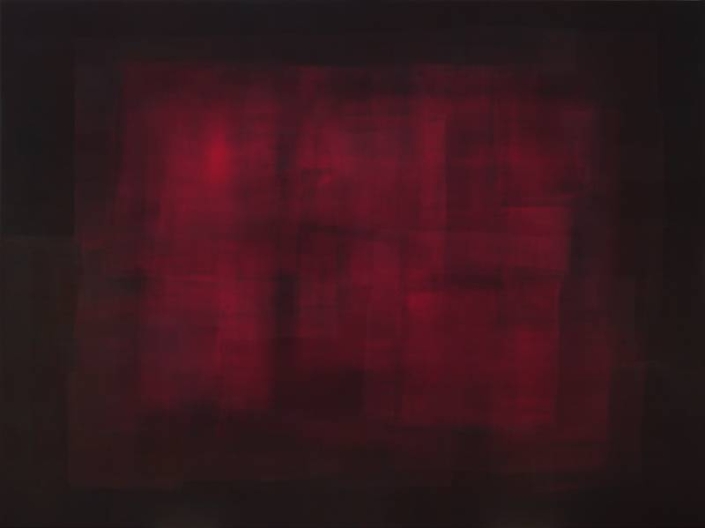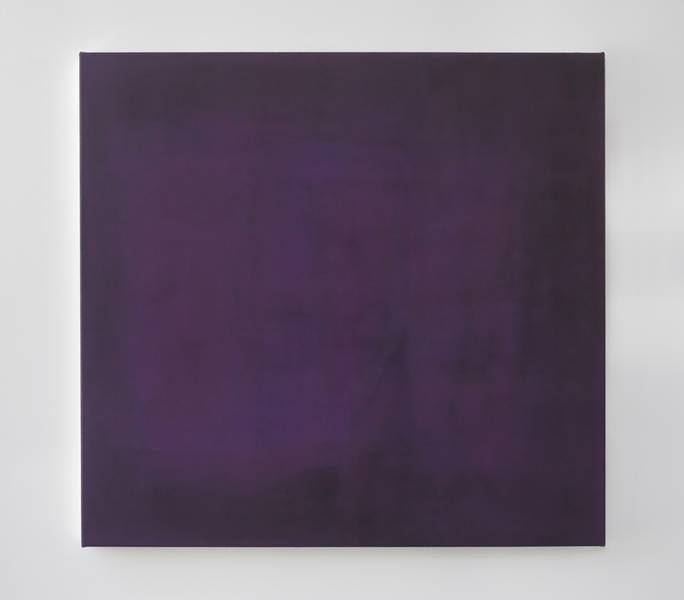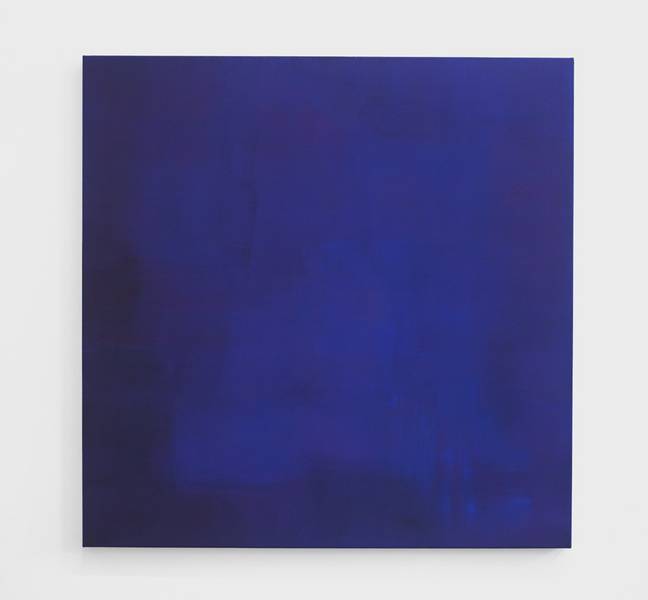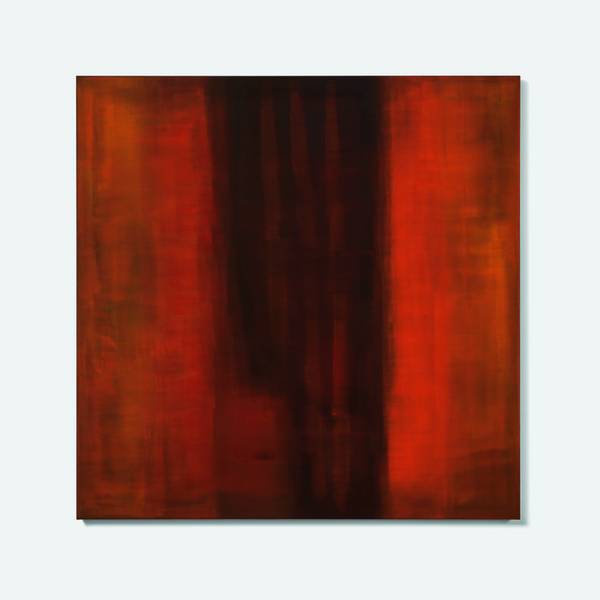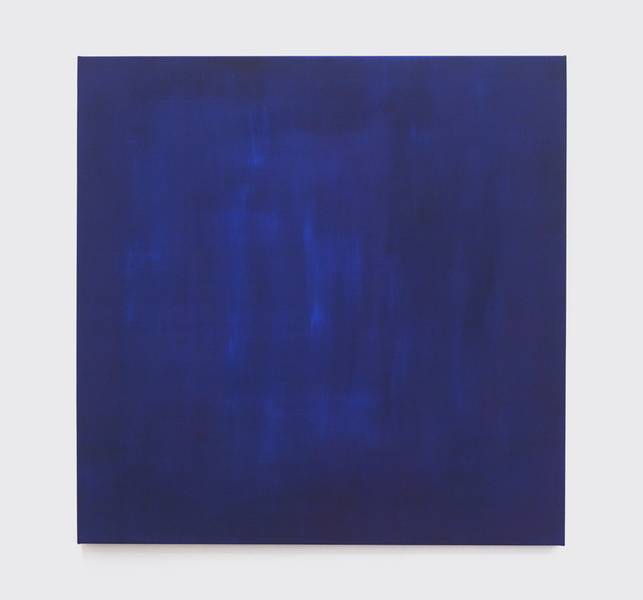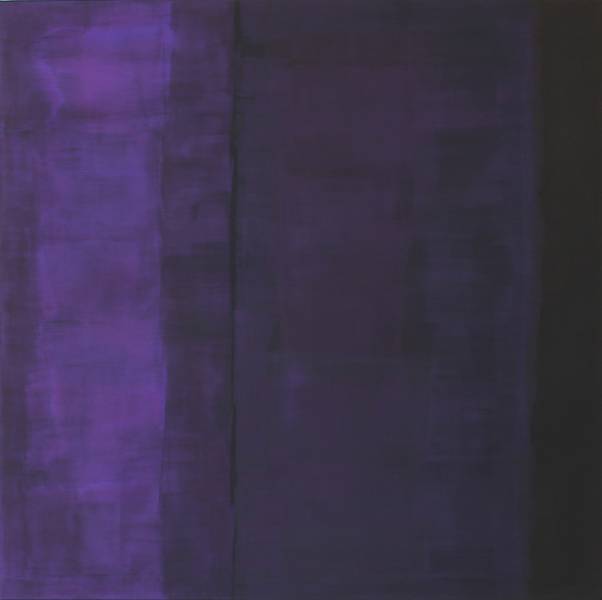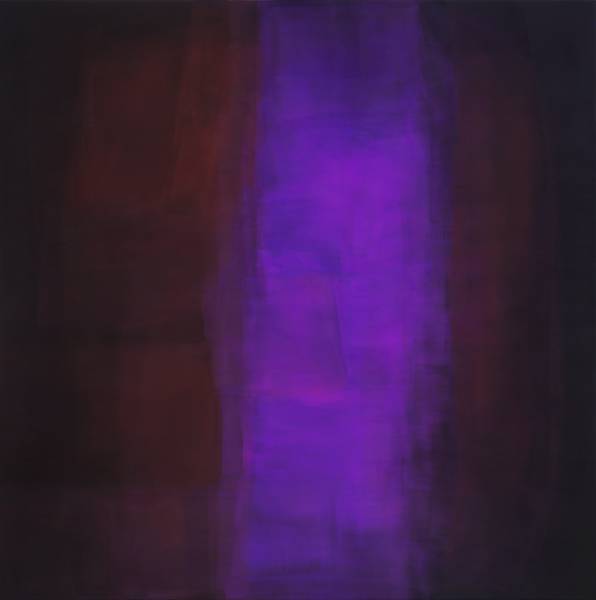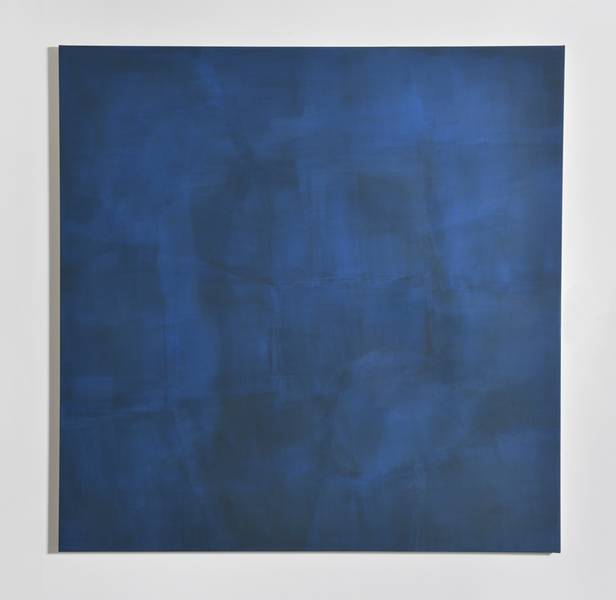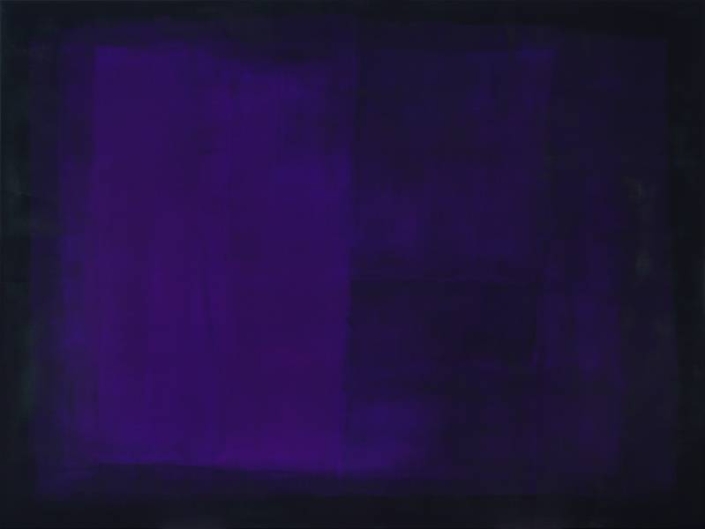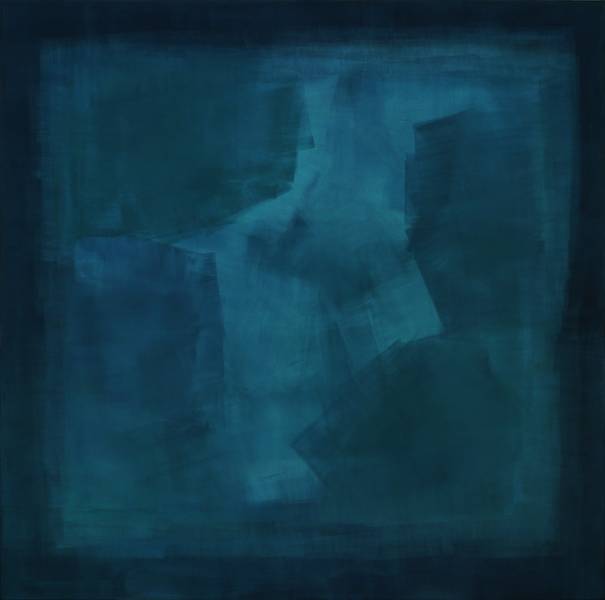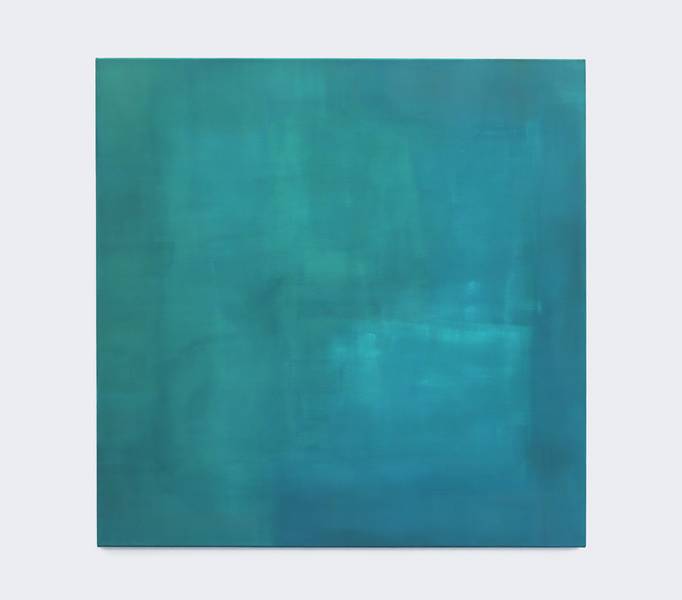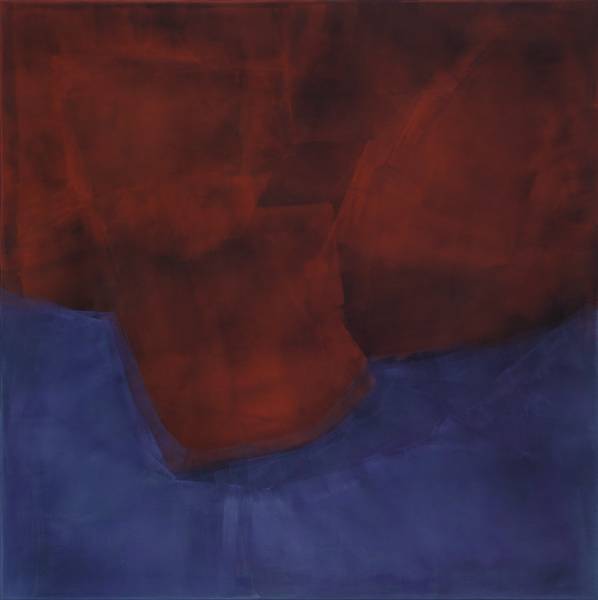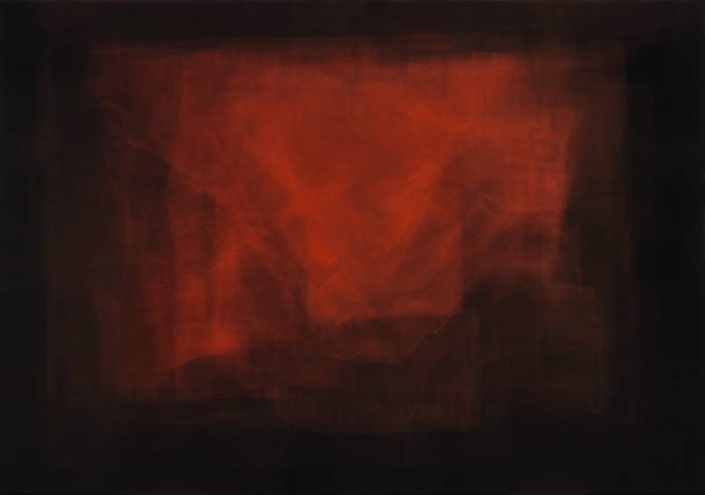Xerxes Ach
The paintings of Xerxes Ach (1957, Esslingen a.N. D) are at first glance monochrome compositions. The artist has devoted himself to the colors, and mixing the material is an important part of the artistic process. He experiments with the centuries-old technique of egg tempera and the more it’s a challenge to mix the colors. They should be as pure as possible and unadulterated by aggressive binders. Egg yolk makes this possible. Again and again, he tests the consistency and then applies the color layer by layer to the cotton fabric, sometimes up to 20 layers. The light thus hits different materials, is refracted in a variety of ways, and creates abstract pictorial compositions that he makes glow mysteriously in this way. These light phenomena embody a microcosm all of their own, an unfathomable universe in which one loses space and time when looking at them. Xerxes Ach’s painting makes us aware of how sensitive we are to colors and the effects they have on us.
Ach uses photographic models, although this is not so directly visible in his work. He collects images from magazines, illustrated books and increasingly from the Internet of faraway places in the desert or at the seashore. It is not their local actuality that fascinates Xerxes Ach, he searches them for their worlds of color, for their coloristic atmospheres. He speaks of “extracting” color from them, condensing it into energy. He repaints ideas that may be stimulated by external images, but are actually laid out in his unconscious and take on a suggestive reality in the paintings. It is mainly the colors and the moods they create that appeal to him. He is interested in how they change through exposure to light, through materials and structures on the surface. His works are reconstructed memories of a color experience or a mood that he knows only by himself. This fleeting nature of life, the transience of spiritual events, and the exploration of intuitive, sensual knowledge is always reflected in Ach’s works.
For Xerxes Ach, painting is material juxtaposition, co-existence and superimposition of colors. The effects of their interplay produce visual experiences in the viewer that make more appear than is materially tangible. What effect do the paintings have on the viewer? They are influenced by the various visual experiences and transform into sensual and aesthetic stimuli. The viewer loses himself in a spiritual experience, immerses himself in the world of the images of longing.
“My painting is primarily about stimulating the senses exclusively through color, recognizing subtle visual experiences, and making materialization and visualization visible through the unlimited possibilities of painting,” says Xerxes Ach about his work. The artist expands the concept of monochrome painting because he uses multiple colors at a time to create a monochrome impression. A color field in Xerxes Ach’s work is anything but a dense, impenetrable, closed surface. It is a subtle mesh of swelling and vibrating hues and compressed time.

